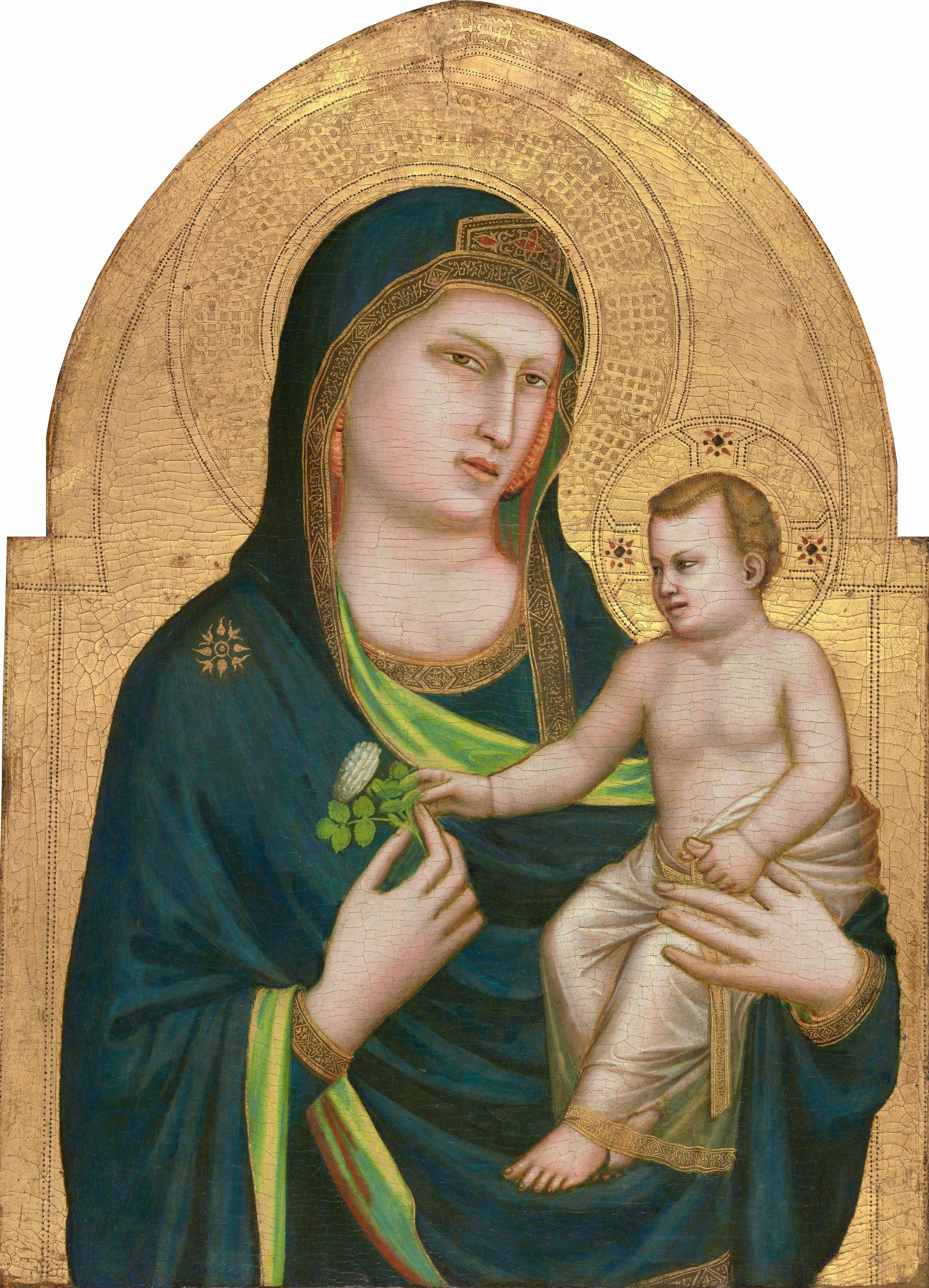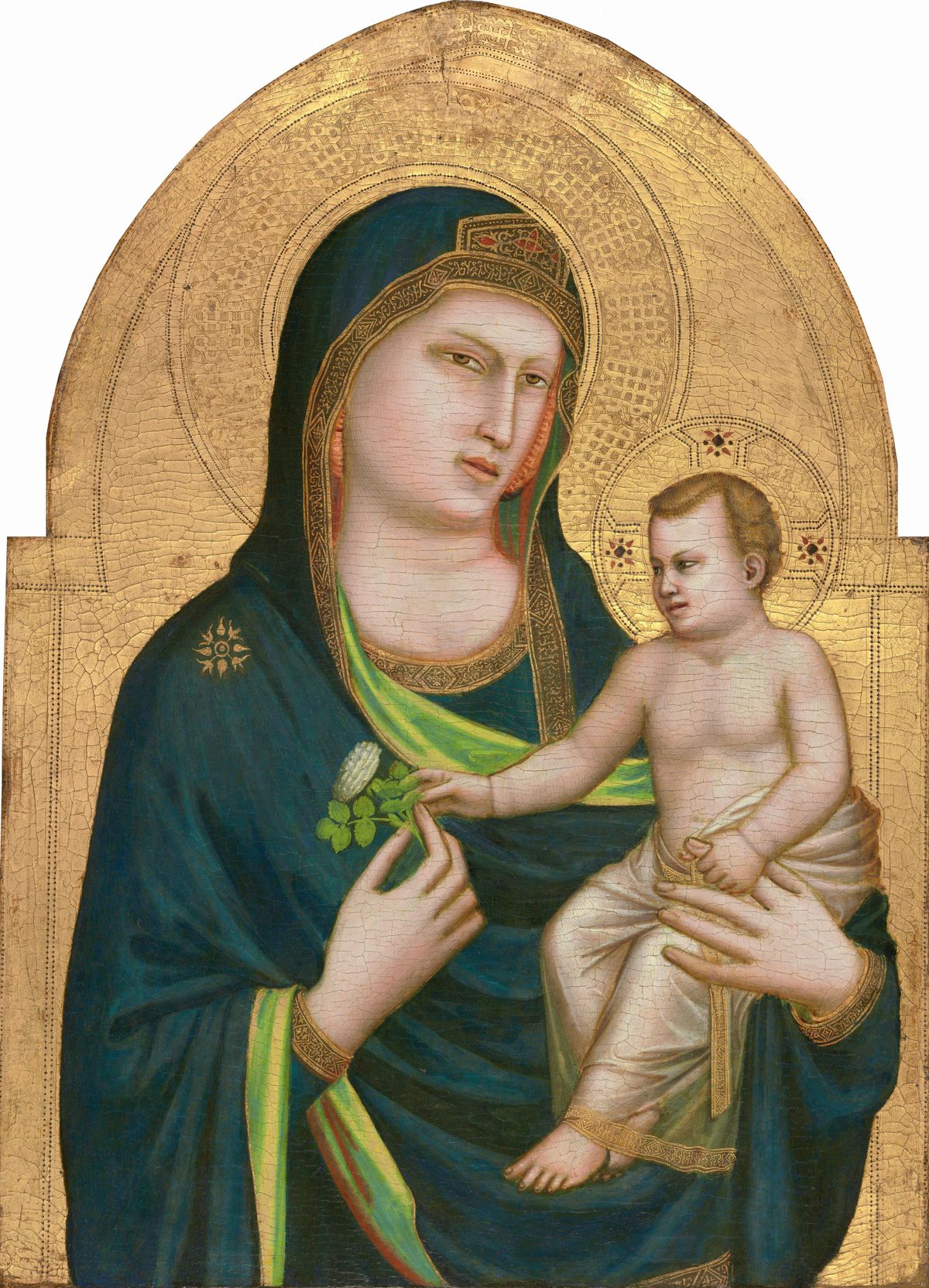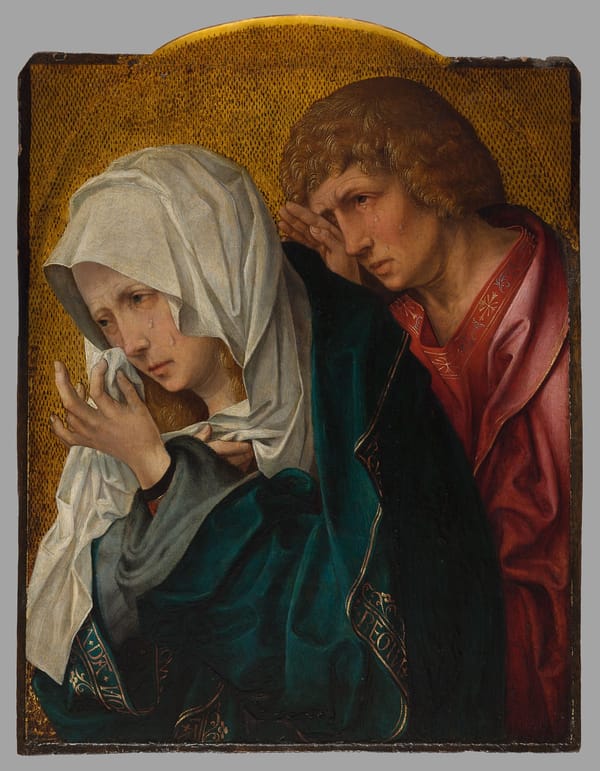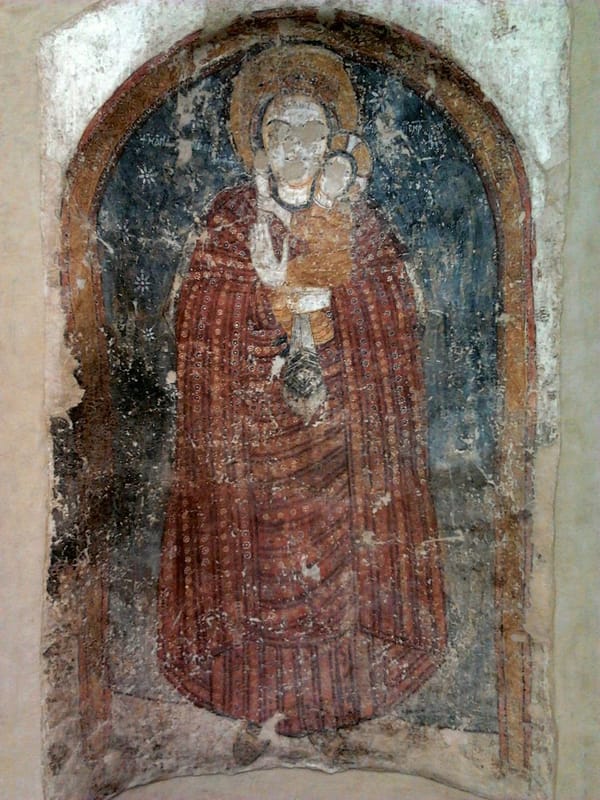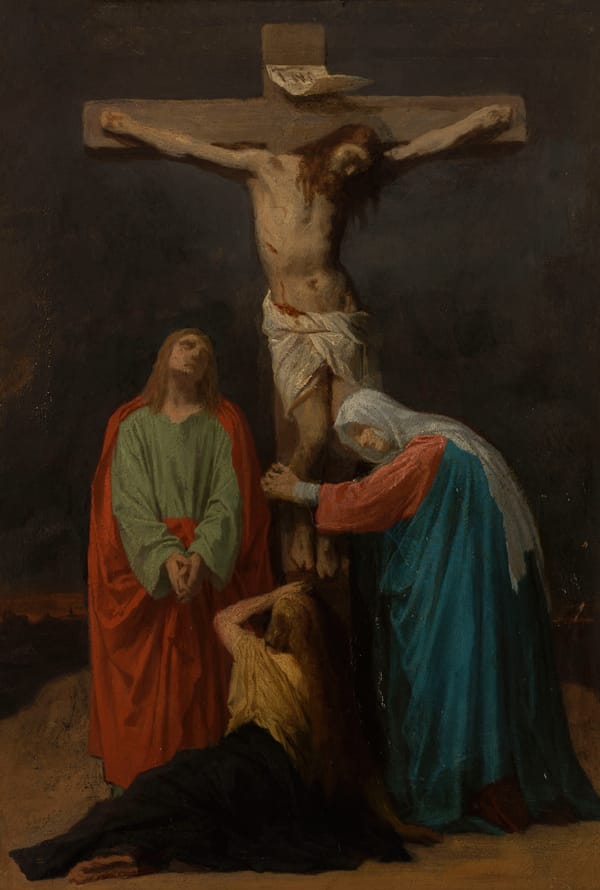Giotto's explorations and innovations in art during the early 14th century developed, a full century later, into the Italian Renaissance. Besides making panel paintings, he executed many fresco cycles—the most famous at the Arena Chapel, Padua—and he also worked as an architect and sculptor.
Transformed by Giotto, the stylized figures in paintings such as the Enthroned Madonna and Child took on human, believable qualities. Whereas his Sienese contemporary Duccio di Buoninsegna (Sienese, c. 1250/1255 - 1318/1319) concentrated on line, pattern, and shape arranged on a flat plane, the Florentine Giotto emphasized mass and volume, a classical approach to form. By giving his figures a blocky, corporeal character, the artist introduced great three-dimensional plasticity to painting.
Painted during the latter part of Giotto's career, the Madonna and Child was the central part of a five-section polyptych, or altarpiece in many panels (see Reconstruction). Giotto utilized a conservative Byzantine-style background in gold leaf, symbolizing the realm of heaven, and included a white rose, the traditional symbol of Mary's purity as well as a reference to the innocence lost through Original Sin. Yet, the Madonna and Child introduces a new naturalistic trend in painting. Instead of making the blessing gesture of a philosopher, the infant Christ grasps his mother's left index finger in a typically baby-like way as he playfully reaches for the flower that she holds.
Free Downloads Below
Hi-Res
1200px
800px
